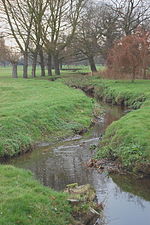Wallasea Island

Wallasea Island lies in Essex, England. It is bounded to the north by the River Crouch, to the south east by the River Roach, and to the west by Paglesham Pool and the narrow Paglesham Creek. The population of the Island is included in the civil parish of Canewdon. Much of the island is farmland, and wheat is the main crop. A small settlement at its western end is linked by road to the mainland and is home to a campsite and marina. It is linked by a ferry to Burnham-on-Crouch. It is possible to walk for about 8 mi (13 km) around most of the sea wall. The south side of the island is one of the most tranquil places in Essex, where wildlife typical of open farmland such as skylarks, corn buntings and hares can be observed. Close by, on the opposite side of the estuary of the River Roach, Foulness Island and Potton Island are visible.
Excerpt from the Wikipedia article Wallasea Island (License: CC BY-SA 3.0, Authors, Images).Wallasea Island
South Trail, Essex
Geographical coordinates (GPS) Address Nearby Places Show on map
Geographical coordinates (GPS)
| Latitude | Longitude |
|---|---|
| N 51.6 ° | E 0.83333333333333 ° |
Address
South Trail
South Trail
SS3 9XE Essex, Canewdon
England, United Kingdom
Open on Google Maps










